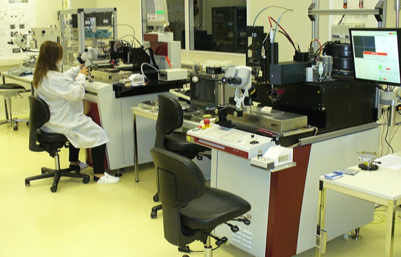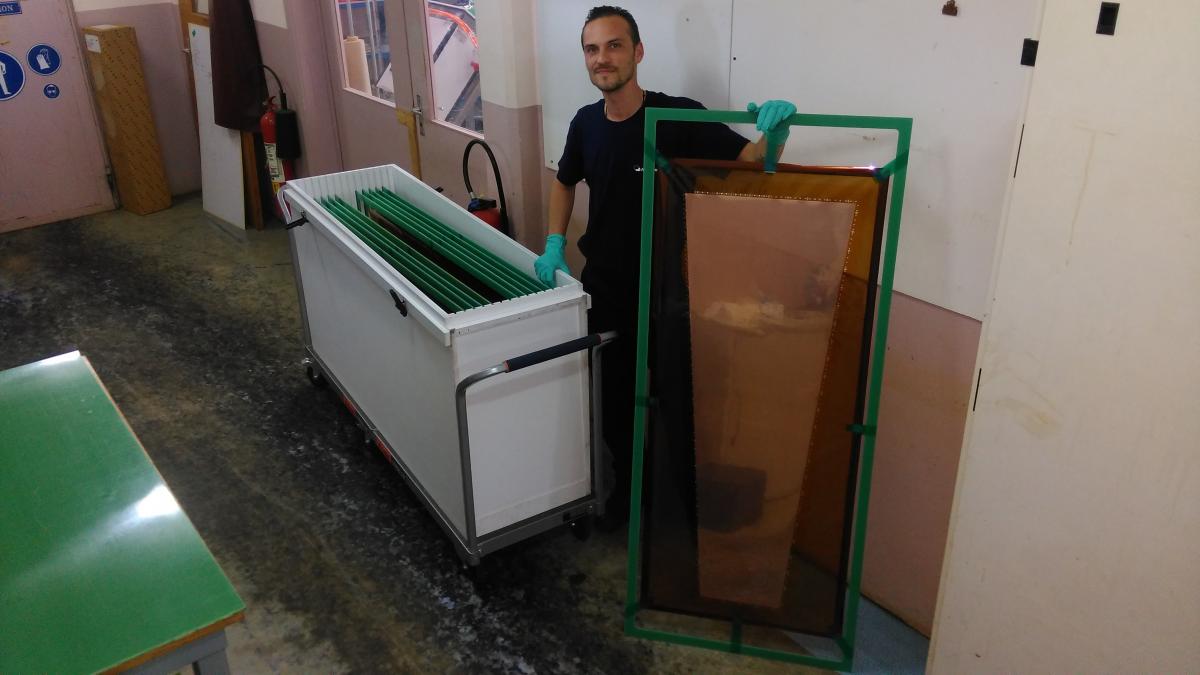An amazing year for the DT group
The DT group, provides centralized resources and expertise in terms of personnel and facilities, for the development of future detector technologies, R&D and contributes to detector construction projects. Thank to the vast range of activities, infrastructure, expertise, and long-standing collaborations with CERN experiments 2016 has been an amazing year for the group. Specific partnerships for Phase 1 detector upgrades were launched with CERN teams in ALICE and LHCb are all well progressing. Moreover, detector prototyping support for the ATLAS and CMS detectors for the Phase 2 upgrade has already started. Finally, DT continues providing technical support to Small and Medium Experiments while contributions to engineering, DAQ and DCS for the CERN Neutrino Platform activities at CERN have been launched during this year.
In terms of infrastructure for the experiments, the Detector Infrastructure Section continued the modernization of magnet safety systems for the LHC experimental magnets and others such as Compass, VTX1-2, M1 and Morpurgo. The section offers also DAQ support, and the first efforts have focused on the stabilization and performance optimization of NA62 DAQ software and on taking a leading role for design of ProtoDUNE SP DAQ system.
In the Fluidics Section, on top of the regular LHC gas systems M&O responsibility, detector gas systems have been improved to adjust to new operational requirements and also to resulting in reduced costs for the experiments. Studies on the use of eco-friendly gases for LHC systems and gas analysis techniques are ongoing. A CO2 cooling plant has been installed in CMS for the new Pixel system, and a demanding R&D programme has been launched with ATLAS and CMS to develop future large CO2 plants for the Phase 2 Trackers. In terms of on-detector cooling, a new set of GigaTracker modules for NA62 successfully use micro-fabricated ultra thin silicon micro-plates directly bonded on to the sensors for localized cool down.
The DT irradiation facilities team has been focused on operating the PS East Area irradiation facilities (IRRAD) and the Gamma Irradiation Facility at the SPS North Area (GIF++). IRRAD had about 200 days of beam time in which 400 objects were irradiated for 28 different teams. GIF++ is being used by 20 different teams that run 24/7.
The Departmental Silicon Facility (DSF) upgraded its infrastructure in view of the high demand from LS2 and LS3 projects; a new bonding machine was acquired, and the room access policy and infrastructure modernized. The team processed 200 wire-bonding jobs for 40 different projects. The complementary Quality Assurance and Reliability Lab (QART), containing high-end QA equipment, handled about 20 expert jobs in the year.

Commissioning of the new wire Boding machine in the DT bonding lab.
The Thin-Film-Glass Facility (TFG) continued to give support to the different detector groups in terms of thin film coating and glass and ceramic machining. In 2016 several prototypes and small series have been produced for COMPASS, RD51 groups, CLOUD, and some expert consultancy was given to projects such as AWAKE.
This B-field characterization service provided magnetic field measurements developing custom mechanical setups for BELLE-II in Japan.
The Micro-Pattern Technologies (MPT) workshop activity is now more directed towards prototyping and production of detector components and detector R&D. Productions of large-size GEM foils for CMS GE1/1 and ALICE TPC have been launched, complemented with a strong industrialization effort in view of future projects. The team continued to successfully develop new detector concepts, such as micro-Rwell and embedded resistive mini pads micro-megas, that both have revealed exciting performances.

Large GEM foils produced in the EP-DT Micro-pattern Technologies workshop.
Design of the ATLAS ITK Pixel structure based on the SLIM layoit, and carbon staves prototype produced in the DT Carbon Composite Lab.
The new DT carbon-composite laboratory has produced C-prototypes for CLIC, CMS, LHCb and ATLAS.
The group has also pursued R&D on detector technologies for the interest of the overall HEP community. About 30 fellows and students work on different aspects of the DT R&D detector programme. The Solid State Detector (SSD) team is developing radiation tolerant silicon sensors for the vertex and tracking detectors for the luminosity upgrade of LHC. For example, DT participates in the evaluation of highly neutron irradiated silicon sensors for the CMS forward calorimeter concept. The SSD team also contributes to several projects within the RD50 Collaboration, such as the study of Low Gain Avalanche Detectors (LGAD) as tracking devices in high radiation environments and/or fast timing applications.
The Gaseous Detectors R&D team continues playing a major role in the RD51 Collaboration, focusing on the promotion and development of the Micro-Pattern Gaseous Detector (MPGD) technologies. The team actively supports the developments for the LHC experiments, and pursues novel R&D on precise timing with micro-megas, GEM optical readout, aging of GEM detectors, neutron detectors.
Finally the DT group contributes to future projects. R&D for the CLIC_ILD detector concept touches on vertex and high-granularity calorimeter technologies while the DT effort on micro-engineering and applications as micro-fluidics cooling as well as connectivity or development of MGy dosimetry for FCC are ongoing.
2016 has again be a year full of projects and we are looking forward to a successful continuation of all the activities in 2017!
You can follow up the activities of the EP-DT group in the group's website.
